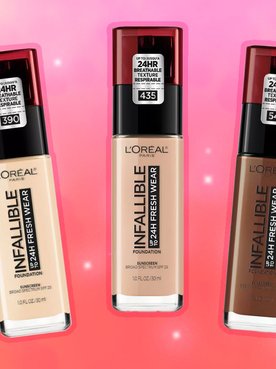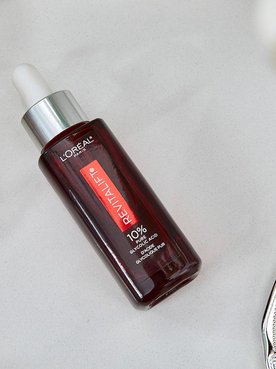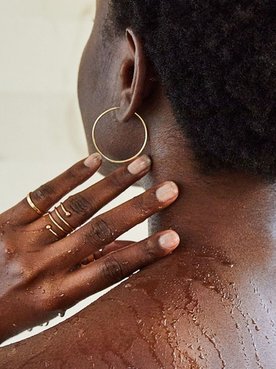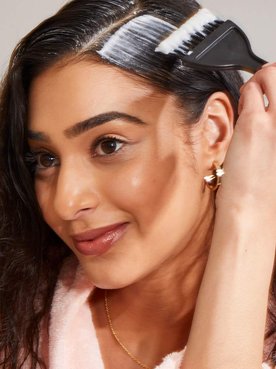Upon the initial sight of small white bumps on your skin, it’s common to assume they’re pesky whiteheads or perhaps keratosis pilaris. But if they don’t disappear in the matter of a few days, you might be left wondering if these bumps are in fact small blemishes or something entirely different 一 like milia. If you’re scratching your head at the mention of this word, keep reading. Ahead, we’re sharing what milia are, how to identify if you have them, and how to treat them.
What Is Milia And What Causes It?
According to the Cleveland Clinic, milia (one is a milium) is a group of small white bumps that occur when dead skin cells get trapped underneath the surface of the skin and form tiny, hard cysts. It’s extremely common among newborn babies, but can also occur in adults.
The Cleveland Clinic also states that there are two types of milia in adults: primary milia and secondary milia. Primary milia is similar to the milia seen in babies, while secondary milia occurs as a result of some type of skin trauma or skin condition. According to the National Center for Biotechnology Information (NCBI), primary milia occurs spontaneously and are mainly seen on the eyelids, nose, cheeks and scalp. The NCBI also states that milia are benign lesions, so don’t panic if you have them.
According to Dr. Erin Gilbert, board-certified dermatologist in New York City, milia can also be caused by using skin care products that are too heavy for your skin type. “I find that whenever patients come into my practice with milia, we trace it back to their using either an eye cream or moisturizer that is too heavy for them,” she explains. “Occasionally, however, some patients are just prone to getting milia. But they are the exception.”
How To Tell If You Have Milia
While the only way to tell for sure whether or not you have milia is to be diagnosed by a healthcare professional, there are characteristics of milia that could help you identify it. “As opposed to small pimples, milia are generally very firm, and aren’t surrounded by the redness or inflammation that pimples are,” Dr. Gilbert explains.
“Another condition that should be distinguished from milia is xanthelasma. These are yellowish cholesterol deposits under the skin, often of the eyelids or lower eyes (also a site where milia can be seen). Xanthelasma tend to be larger, are not firm, and are more pronouncedly yellow,” she says.
How To Treat Milia
According to the NCBI, milia usually doesn’t require treatment as they typically self-resolve after a few weeks. Because milia are trapped keratin or dead skin cells under the skin, the Cleveland Clinic suggests that adults with milia try over-the-counter exfoliating products containing ingredients like salicylic acid or alpha hydroxy acids which help to shed dead skin cells. If milia doesn’t improve on its own or after using exfoliating treatments after a few weeks, visit a doctor who can remove the cysts by making small lacerations or using a needle to lift the top layer of the skin and get the milia out. Because milia usually occur in delicate areas, it’s extremely important to seek a professional to remove them in order to avoid infection and scarring.
Next: 7 Types Of Eczema And What Causes Them
Written by: Alyssa Kaplan, Photo: iStock





